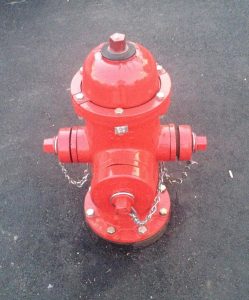The holiday season is upon us, and while it is indeed a joyous and festive time of year, it can also be a difficult one. We have put together some tips for maintaining physical and mental health during this bustling time.
 Eat frequently.
Eat frequently.
We all know the holidays are a time for cookies, cakes, and candy canes, and enjoying the tastes of the season is part of the festivities. However, overindulging in sweet treats can lead to weight gain, lethargy, and illness. Try to eat small, healthy meals, including lean protein and a variety of vegetables, every 3-4 hours; that way, you’ll stay satisfied all day and be less likely to overeat those tempting trifles. And when you do indulge, keep the portion to one serving: enjoy a small piece of cake, one cookie, or a single truffle. By maintaining balance, you won’t feel deprived and will still keep your diet and health in check.
Get enough sleep.
A good night\’s sleep does a lot more than just banish those pesky under-eye circles. A full night’s sleep – 7-9 hours per night – boosts memory, aids in disease prevention, allows the body to make necessary repairs to itself, assists in maintaining a healthy weight, increases creativity, and helps the body resist illness. And that’s just the tip of the iceberg. Adequate sleep, once greatly overlooked, is now touted as one of the most important factors in maintaining overall health. So go ahead, hit the snooze button. Your body and mind will thank you.
 Stay active.
Stay active.
Let’s face it, the chilly, short days and frenetic schedule this time of year make squeezing in daily exercise a challenge. However, staying active year-round helps stave off illness and disease, boosts metabolism, supports mental health, and helps maintain a healthy weight. Some tips for exercising around the holidays include joining a gym (they always have specials this time of year), skiing, iceskating, working out with your smartphone or tablet (there’s an app for that!), or signing up for a fitness class. Be creative! Even choosing to take the stairs, wash your windows, or to park at the opposite end of the parking lot at work will help you sneak in extra daily activity.
De-stress.
Stress is one of the largest factors in contributing to illness, disease, and weight gain. The holidays are particularly difficult for many people due to a variety of stressors, such as harried schedules, crowded shopping centers, and familial and monetary worries. Don’t let the holidays stress you out! Practice breathing techniques, take a yoga class, relax with a cup of peppermint tea, or meditate. These are simple, yet effective measures in reducing stress and allowing you to enjoy the season. And speaking of ways to de-stress…
Practice positive thinking.
It is so simple, and really pays off. Consistent positive thinking does take some conscious effort, but with a little practice, it will become second nature – and you’ll be on your way to a much calmer and happier outlook. Somebody cut you off on the highway? Be grateful you weren’t in an accident. Heating oil delivery costs are through the roof? Be thankful for that roof. Be mindful of everyday aggravations, and find a way to turn them into moments of gratitude.
 Drink your water.
Drink your water.
This one is our favorite! Adequate water consumption – half your body weight in ounces per day – offers a myriad of health benefits, including disease prevention, heightened metabolism, weight maintenance, illness prevention, mental clarity, and joint health. In addition, staying hydrated gives you shiny hair, strong nails, and healthy skin. Providing clean, safe water is something we are passionate about here at Tata & Howard. We hope you will drink your water and enjoy the many benefits it has to offer this holiday season. And last but not least…
Smile.
While the adage “It takes 43 muscles to frown and only 17 to smile” is largely an old spouse’s tale, the premise behind it holds firm: smiling and spreading cheer is easy and infectious. So give it a try, along with our other tips, and enjoy the happiest, healthiest holiday season possible!




